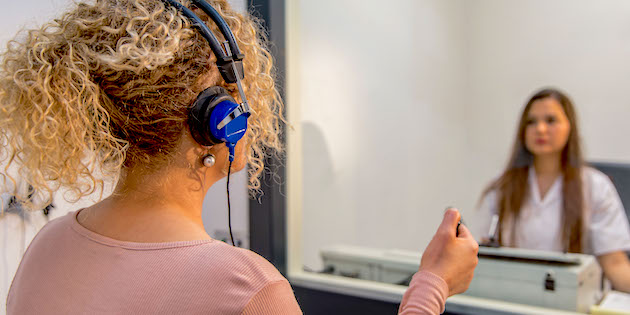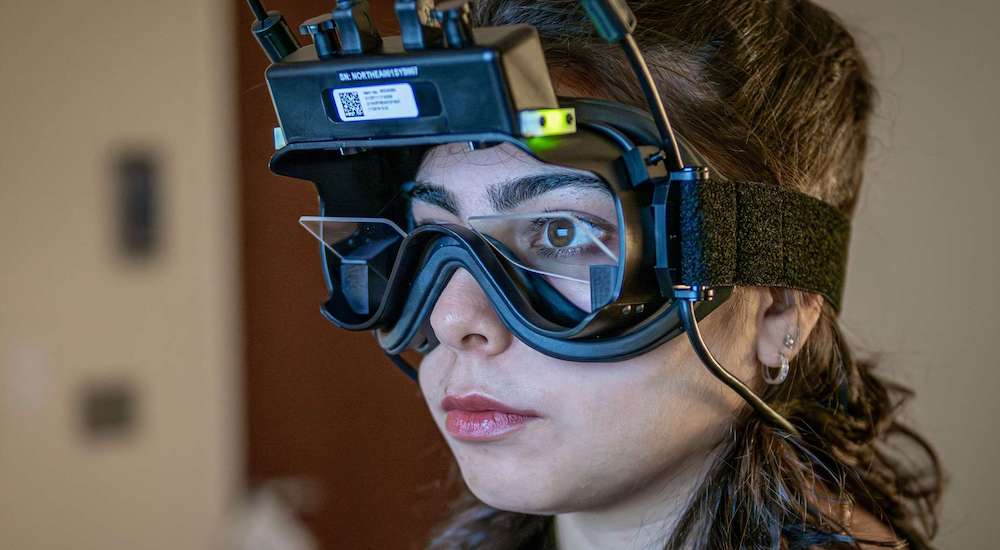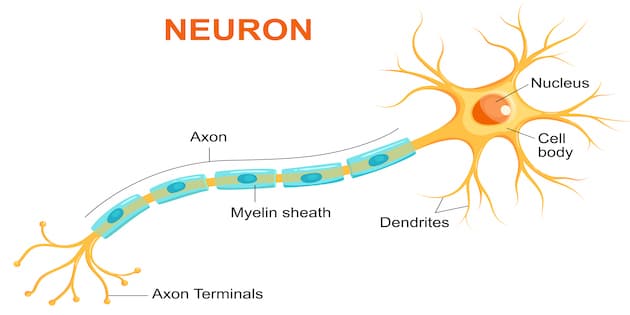THE BINAURAL BROADBAND LOUDNESS SUMMATION - Why does the pure-tone audiogram explain only 30% of a hearing loss?
Loudness is one of the key factors related to overall satisfaction with hearing aids. Neither gain calculations based on audiograms nor loudness-based hearing aid fittings with narrowband signals guarantee normalisation of loudness perception for binaural broadband signals. This article reveals the great individual variabilities found in binaural broadband loudness summations, a hitherto undocumented aspect and one that is paid too little attention in practice.

Individual loudness perception plays a fundamental role in hearing aid fitting. Gain and compression adjustments have a direct impact on the patient’s loudness perception. “Too loud” was the most common response listed in subjective problem descriptions when hearing aids were not fitted optimally [1]. In the 2018 EuroTrak study [2], only 66% of those surveyed said they were satisfied with their comfort with loud sounds. This scored low in comparison to other aspects surveyed; only “battery life” (62%) and “use in noisy situations“ (64%) were lower. It was the “comfort with loud sounds” factor that most influences overall satisfaction with hearing aids, thus illustrating the great importance of loudness in the fitting of hearing aids and their acceptance as part of one’s daily life.
Narrowband loudness compensation
Subjective loudness perception can be determined individually by using Categorical Loudness Scaling (CLS). In practice, this is usually performed with narrowband signals [3, 4]. The results are loudness curves for different frequencies. Figure 1 shows the 2000Hz loudness curve for a 40 dB HL hearing threshold. The measured loudness curve is in blue. The black dashed line shows the average loudness function for normal-hearing (NH) subjects. The blue loudness curve shows typical effects of hearing loss in loudness perception: signals below the hearing threshold are not perceived; for signals slightly higher than the hearing threshold, loudness perception is lower in comparison to the average NH loudness curve; for high levels of sound pressure, the loudness curve is similar to that for NH subjects.
Some rationales for hearing aid fittings involve normalising of narrowband loudness curves (e.g. LoudFit [5], LPFit [6]). To do this, gains are applied so that the loudness curve moves close to the average NH loudness curve. In Figure 1, the required gain is shown in red. Although the narrowband loudness normalisation was determined individually, some patients still perceived the adjustment as ”too loud“ for daily life. Therefore, even after adjusting narrowband loudness, individual corrections were needed to achieve satisfactory gain adjustment for daily use.
Observing everyday sounds tells us these are dominated by broadband signals, such as speech, music, and environmental noise. The aim of hearing aid fittings should be to normalise loudness perception of broadband signals. Broadband signals differ from narrowband signals in that the former are not limited to a narrow frequency range and the signal energy is distributed across a wider range of frequencies.
Two subjects with similar hearing thresholds had normal narrowband loudness curves following narrowband loudness compensation (centre panel in Figure 2).
The x-axis corresponds to input level before narrowband loudnesss compensation was applied. This corresponds to the signal level prior to being processed and amplified by the simulated hearing aid. Nevertheless, there are big differences in the loudness curve for binaural broadband signals (right panel in Figure 2).
Subject A presents a similar loudness curve to normal-hearing subjects, while subject B shows a greatly increased loudness curve, even at low levels following narrowband loudness compensation.
Loudness ratings of “extremely loud” in subject B were already observed for an input level of 60 dB. The grey area in Figure 2, between the binaural broadband loudness curve following narrowband loudness compensation, and the mean binaural broadband NH loudness curve, is called the binaural broadband loudness summation. The values for the increased loudness summation at 80 dB input level are 7 dB for subject A and 33 dB for subject B.
This means that narrowband loudness measurement is at best only an inexact estimate of individual loudness perception in daily life, because predominant in daily life are broadband binaural signals. If narrowband binaural loudness functions are measured, it is not known if the patient’s binaural loudness summation is normal, slightly high, or very high.
Loudness summations for over 200 users
Recent years have brought us recorded data on summations of binaural broadband loudness following narrowband loudness compensation in 216 subjects. The data was registered at the Hörzentrum Oldenburg GmbH, Carl von Ossietzky University of Oldenburg [7] and the University of Amsterdam’s Academic Medical Centre (AMC) [8].
In Figure 3, the level for a ”very loud“ (45 CU = categorical units) binaural broadband rating following narrowband loudness compensation is shown over the average hearing thresholds at 500, 1000, 2000, and 4000 Hz ((pure-tone average, PTA). The green area marks the range in which 80% of normal-hearing subjects were found. For only 35% of the subjects with hearing impairment is the input level for a ”very loud“ assessment within the range of those with normal hearing. Approximately 25% of the test subjects had a ”very loud“ rating for signals below an input level of 70 dB (orange area). In this case, there is a high probability that these people would not accept a hearing aid adjusted with narrowband loudness compensation for daily life, because the amplification is clearly set too high.
The outcomes of previous studies on binaural broadband loudness summation make it clear why a prescriptive gain prediction from the pure tone hearing thresholds is associated with high inaccuracies in loudness perception. Neither the individual narrowband nor broadband loudness functions are taken into consideration in prescriptive formulas. In the case of fitting concepts with narrowband loudness compensation, it can be assumed that there is increased sensitivity in relation to the binaural broadband loudness perception in about one in four hearing aid fittings. This may be one of the reasons why fitting concepts based on loudness with narrowband signals have not prevailed over prescriptive methods.
References:
[1] Jenstad LM, Van Tasell DJ, Ewert C (2003) Hearing Aid Troubleshooting Based on Patients’ Descriptions. J Am Acad Audiol 14:347-360
[2] EHIMA EuroTrak 2018. https://www.ehima.com/wp- content/uploads/2018/06/EuroTrak_2018_GERMANY.pdf, aufgerufen am 25.5.2021.
[3] HörTech (2014) Bedienungsanleitung “Kategoriale Lautheitsskalierung”
Version 1.7. https://www.hoertech.de/images/hoertech/pdf/mp/produkte/kls/Bedienungsanleitung.kls.pdf aufgerufen am 22.6.2021
[4] Acousticon (2021) Bedienungsanleitung “Skalierung (AHA) https://www.acousticon.eu/intern/hilfe/index.html?SkalierungBedienung.html aufgerufen am 22.6.2021
[5] Herzke, T, Hohmann, V (2005). Effects of instantaneous multiband dynamic compression on speech intelligibility. EURASIP Journal on Advances in Signal Processing, 18, 1-10.
[6] Kreikemeier, S, Latzel, M, Kießling, J (2011) Verfahren zur lautheitsbasierten Anpassung von Hörgeräten mit instantanem In-situ-Perzentil-Monitoring. Zeitschrift für Audiol 50:62-72
[7] Kramer, F, Schädler, MR, Hohmann, V, Oetting, D, Warzybok, A (2020) Speech intelligibility and loudness perception with the trueLOUDNESS fitting rule, 46. Deutsche Jahrestagung für Akustik (DAGA, Hannover)
[8] van Beurden, M, Boymans, M, van Geleuken, M, Oetting, D, Kollmeier, B, Dreschler, WA (2021) Uni- and bilateral spectral loudness summation and binaural loudness summation with loudness matching and categorical loudness scaling, International Journal of Audiology, 60:5, 350-358
Source: Audio Infos UK issue 148 May-June 2022



